In our previous article, we saw the importance of knowing your audience’s reading distance and the characteristics of your Nummax display. You’ve seen the easily-avoidable mistakes and the importance of colour contrasts to ensure better content legibility.
In this next part, we’ll discuss the importance of the choice of font and how to prioritize your text content, calculate the minimum height for the smallest text based on the distance from your audience, and the importance of the pixel pitch.
Content Font
Choosing the right font for your content is very important. You probably have a lot of fonts on your computer, but not all of them are recommended for an LED display.
If we consider that your audience is moving, away from your display and that you’ll create your content in a variety of colours, you should choose sans serif-type fonts and avoid script-type fonts.

Sans-serif
|
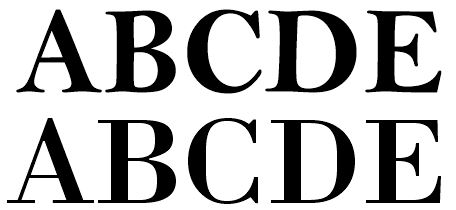
With serif Avoid as much as possible
|
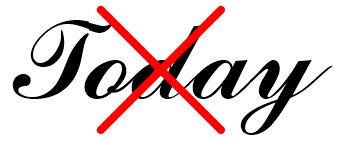
Script DO NOT USE |
With sans serif fonts, your message remains readable even with a minimum pixel height.

In our previous article, we explained that a strong contrast makes reading the text easier, but how you prioritize the various parts of the message (like the hook, the added information, and detail), as well as the size of the characters, helps improve your content’s overall readability.
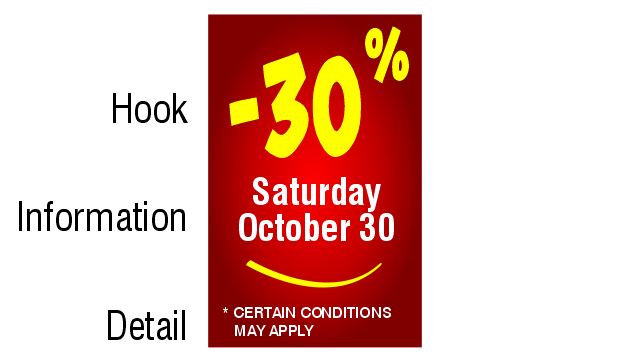
On an LED display, you have to determine what minimum height is appropriate for the detail line. To assess this height, we use your audience’s reading distance and movement coefficient.
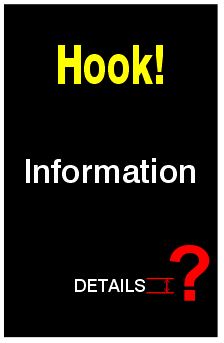
Content reading distance
Your audience’s distance from the display is important. The speed at which each person moves by your display will also be decisive in choosing the minimum height for your texts.
The calculation is based on using a sans-serif font with a good contrast and adjusting your equipment’s brightness to suit the ambient lighting.
There are different formulas on the internet to calculate this minimum height but Nummax offers you this simplified formula:
Proper text height = (Reading distance/150) x Movement coefficient
The movement coefficient is a number determined by Nummax which can be adjusted according to the environment in which your display is installed.
Movement coefficient
| Audience’s Movement | Movement coefficient |
|---|---|
| Perfectly static audience (Shopping centre, restaurant terrace, bus shelter, etc.) |
1 |
| Pedestrian zone (pedestrian street, sidewalk, square, etc.) |
1.2 |
| Parking area (vehicles travelling less than 15km/h) |
1.6 |
| Quiet street (vehicles travelling at 30 km/h maximum) |
2 |
| Normal traffic | 2.6 |
If your display broadcasts content to a pedestrian area and your audience is 6 meters away, or → 600 cm (± 20 ’or → 240”), this gives:
Imperial (240 / 150) x 1.2 = 1.92 ”
or
Metric (600 / 150) x 1.2 = 4.8 cm
Obviously, considering that this is the minimum height, you shouldn’t display important information at this size.
Here are some examples of small font sizes on a display with a static audience:
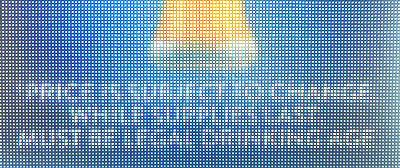
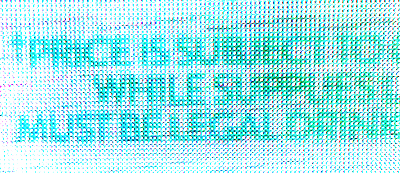
Now that we know the minimum height for the smallest text, we need to convert it to pixel height using your display’s pixel pitch.
Pixel pitch
The pixel pitch is the distance between the centers of 2 LEDs on your display.
This distance determines the size of the smallest pixel in your image and helps you calculate your display’s dimension in pixels.
![]()
For example, the Nummax LED Pro Posters come in 2 pixel pitches: 2.5mm or 4mm, depending on the fineness you need.
When you know your display’s pixel pitch, you can determine the final pixel dimensions that you will use when creating your content:
For a 640 x 960 mm display with a 4mm pixel pitch, the size of your content will be:
640 mm / 4 mm = 160
960 mm / 4 mm = 240
160 x 240 pixels
![]()
In the previous paragraph, we calculated the smallest text size that can be used.
This size can be converted into a pixel to prepare your texts by using this formula:
Minimum size in mm / pixel pitch = minimum pixel size
With the previous example, this gives us (4.8cm → 48mm):
48mm / 4mm = 12 pixels
Each letter displayed on our electronic devices fits into a grid. We must therefore see if the text is readable at this minimum pixel height.
The minimum readable pixel height varies depending on the font used. Logically, the more you increase the number of pixels, the more clearly the characters will display.
![]()
Here is the same text with pixel height doubled.
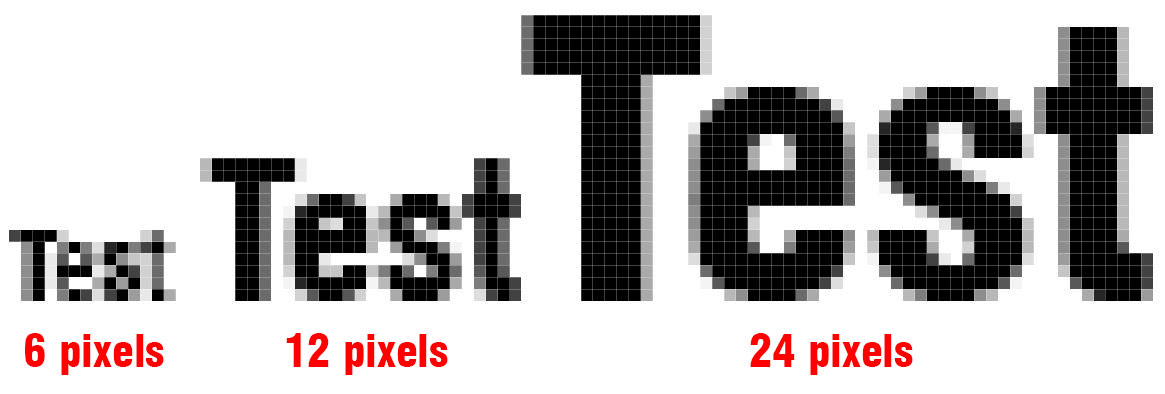
and here’s what it looks like on a 160 x 240 pixel poster.
![]()
It should be noted that the text at 12 pixels is fairly readable.
If your pixel pitch is 4mm, then this 12 pixel text is 48mm (1.88”) tall in reality on your display.
Now that you’ve seen the importance of choosing the right type of font, the reading distance with a coefficient of movement, you’ll be able to determine the size of your smallest text in pixels thanks to your display’s pixel pitch.
In our next article, we’ll discuss the aspect of composition, file formats, and we’ll provide templates with which you can practice. But if you need computer graphics created for your content, Nummax provides a composition service and can manage your display’s content as well.
To be continued…
